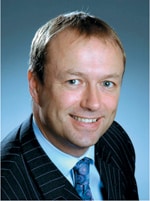Treasurers are rapidly realizing the benefits of storing surplus cash in
money market funds.
 |
|
|
Cash is piling up in corporate treasuries worldwide, and a savvier generation of corporate treasurers is realizing that they have more options than simply parking the money in the bank. The past decade has seen an explosive growth in money market funds (MMFs)first in the United States and now in Europe.
In Europe, says Peter Knight at JPMorgan Fleming Asset Management in London, MMFs have been growing at anywhere between 25% and 60% a year. The total in Europe has gone from nothing in 1995 to $160 billion today. The headline driver is probably the returns: Although low interest rates have squeezed the net returns from MMFs, particularly allowing for the asset management fee, cash in a money market fund can deliver an extra 4 to 6 basis points of performance during periods of higher interest rates.
That return does, of course, depend on the funds actual management. The crucial factors in the performance of a fund are the direction of interest rates and the skill of managers in playing the yield curve. In a situation of falling rates, a fund will be positioned with longer dated maturities, and with rising rates it will be nearer an overnight position.
But performance is only part of the game as far as MMFs are concerned. Risk diversification is another important driver. They are a good investment option for risk-averse investors, says Caroline Cudars, sales director for Fidelity Investments UK and Ireland institutional cash fund. Companies with huge cash surpluses want to diversify their counterparty risk, she explains.
AAA-rated MMFs provide them with a convenient way of doing just that. The underlying assets in the funds will be a mixture of cash deposits, repos, CDs, commercial paper, FRNs and short-dated government bonds. Where investors want to look through and see the assets, says Knight, weve built software to enable them to do that. Typically, it is only larger clientswho may have as much as $1 billion in an MMFwho will want to do that.
Convenience is an important part of the equation, according to Mark Hannam, head of investment solutions at Barclays Global Investors (BGI). He has also seen a drive toward outsourcing of the management of cash surpluses. Were finding more people saying this is not a core business for them. To do it well you need a combination of people with skills in credit analysis and fund management as well as support functions, he says.
MMFs Gain Favor in Europe
The advent of the euro also gave the European market for MMFs a powerful boost. That was the trigger for the arrival of US expertise and marketing in Europe. As Simon MacDonald, assistant vice president at Deutsche Asset Management, explains, the firm has built up around $80 billion in US money market funds and has grown its rated offshore MMFs into a $5 billion offering in just three years.
European subsidiaries of US corporations have been among the most enthusiastic users of the product. But European corporates are catching on, as are hedge funds and the private wealth management industry.
 |
|
|
The framework in the US and Europe does differ, but not that substantially. In the US, MMFs have operated within what are known as the Section 207 rules. In Europe the regulatory landscape is more fragmented, but Europes so-called UCITS legislation has provided a convenient enough umbrella for the marketing of funds.
Asset managers were quick off the mark in developing the market in the US, at a time when the banking system was still reeling from the savings and loans debacle. Fidelity and Federated Investors are among the biggest US providers, and there are, says Hannam, upward of 30 big players with more than $10 billion in their funds in the US.
In Europe the market has been carved up between a much smaller number of big players, with BGI, Fidelity, JP Morgan Fleming and Merrill Lynch netting around 50% of the market between them.
Nevertheless, rapid growth in Europe has meant that more players have entered the market. So far, says Hannam, they have found it difficult to make much headway. To thrive, an MMF provider needs a combination of a good distribution network and an asset management capability. So Hannam expects to see a consolidation phase as some of these providers depart.
But there is one set of players that have yet to exploit their advantages to the full: the big Europeanbancassurance groups such as ING, ABN, Fortis and Dresdner/Allianz that have exactly the combination of asset management expertise and distribution that should make them serious competitors.
Integration is the Key
The more integrated a provider the better. The advantage some big cash management banks have over the pure asset managers in competing for MMF business is their ability to join up cash management functions with investment management. What this meansas in the case of JPMorgan Flemingis that the bank can automatically sweep cash balances out of accounts and into a money market fund. The latest offering from JPMorgan Fleming even allows this to happen on an intra-day basis.
This kind of facility is one example of the ways in which, as Knight puts it, the wrappings will change around the basic MMF product. That means facilities should emerge such as 24-hour dealing, electronic access points to monitor positions or more tailored choices about where a client is positioned on the yield curve. All these are value-added features that the bigger providers believe they can deliver as larger sums under management enable them to spread the cost of upgrading services across a wider range of clients.
Graham Field



